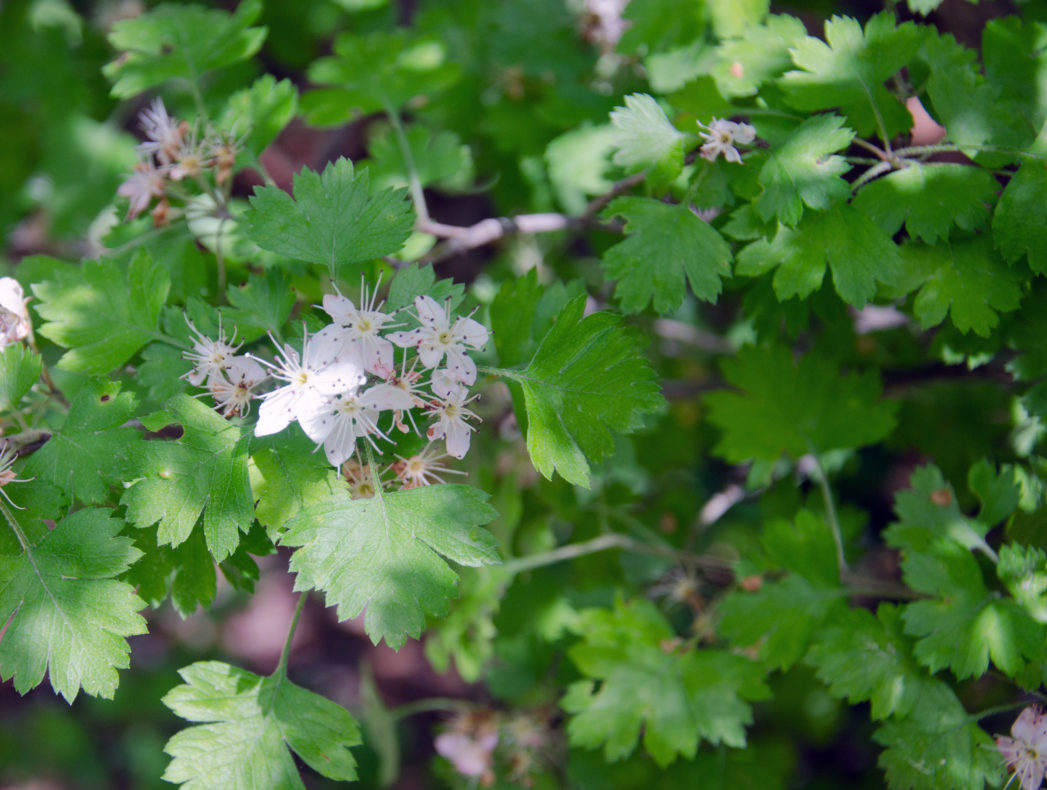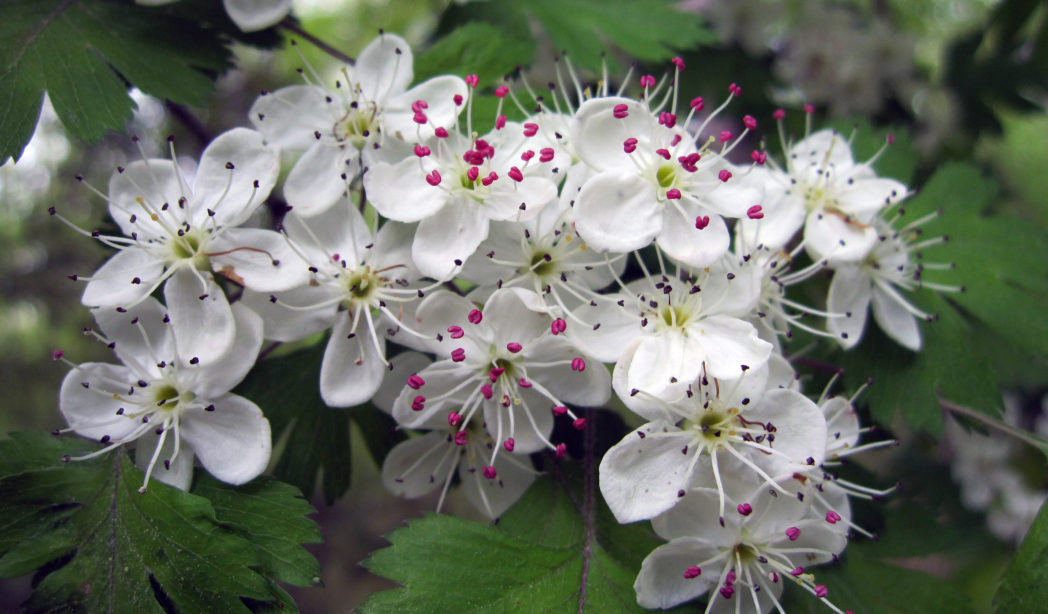Parsley haw
Pictured above: Parsley haw (Crataegus marshallii) by Chris M. Morris (CC BY 2.0). Click on terms for botanical definitions. View post as a PDF.
Parsley haw (Crataegus marshallii) is a deciduous flowering shrub or small tree. Its many showy flowers have five white to pinkish petals and conspicuous red anthers. Leaves are triangular with deeply incised lobes and toothed margins. They are alternately arranged. Fruits are bright red, apple-like berries. The plant is often multi-trunked with scaly grayish bark. Branches are usually thorny.
Parsley haw occurs naturally in moist wooded slopes, floodplains and riverine forests. Its flowers, which bloom in the spring, are an important source of nectar for a variety of pollinators. The plant is a larval food source for many butterfly and moth species, and provides food and shelter for birds and small mammals.
The genus Crataegus comes from the Greek word kratus or “strong” (referring to the wood) and akakia or akis, which means “thorn.” The common name “parsley haw” refers to the resemblance of the leaves to those of the herb parsley.

Family: Rosaceae (Rose family)
Native range: Panhandle, north and west-central peninsula
To see where natural populations of parsley haw have been vouchered, visit florida.plantatlas.usf.edu.
Hardiness: Zones 8A–9B
Soil: Moist sand or loamy soil
Exposure: Full sun to full shade
Growth habit: up to 20’ tall
Propagation: Seed, cuttings, grafting
Garden tips: Parsley haw makes a great addition to a home landscape provided it has consistent soil moisture. Its leaves, flowers and fruits are colorful and attractive, and its bark provides winter interest.
Parsley haw plants are often available from nurseries that specialize in Florida native plants. Visit www.plantrealflorida.org to find a nursery in your area.

